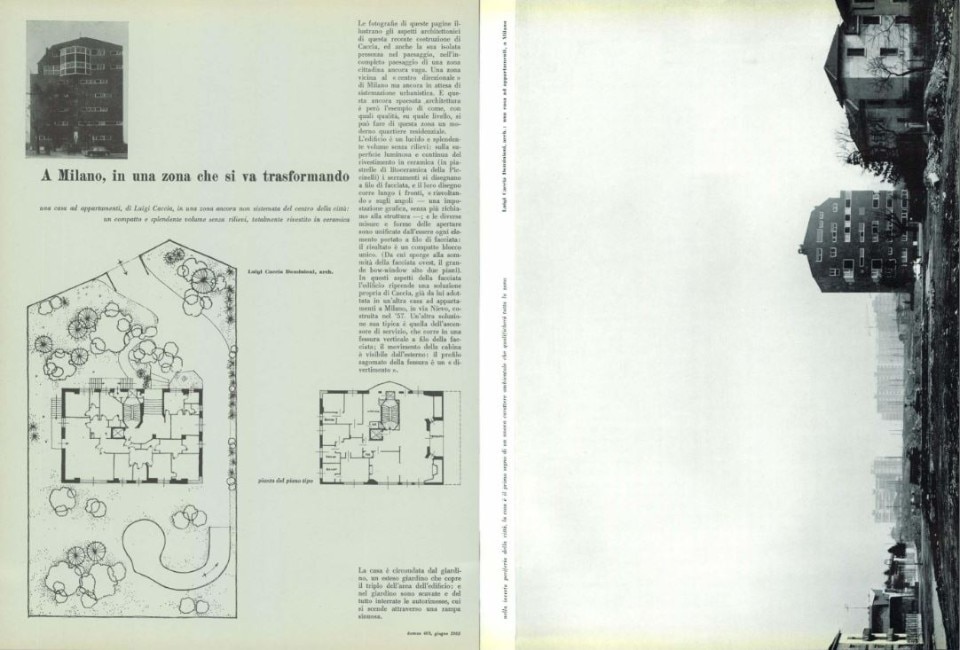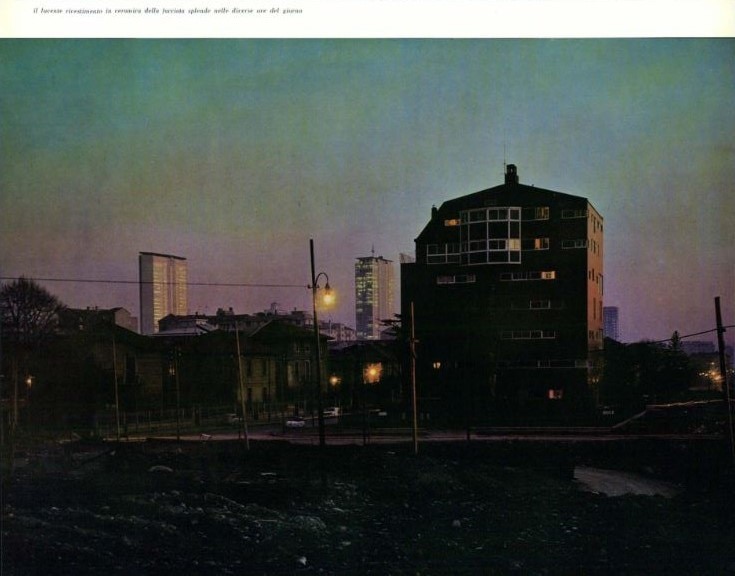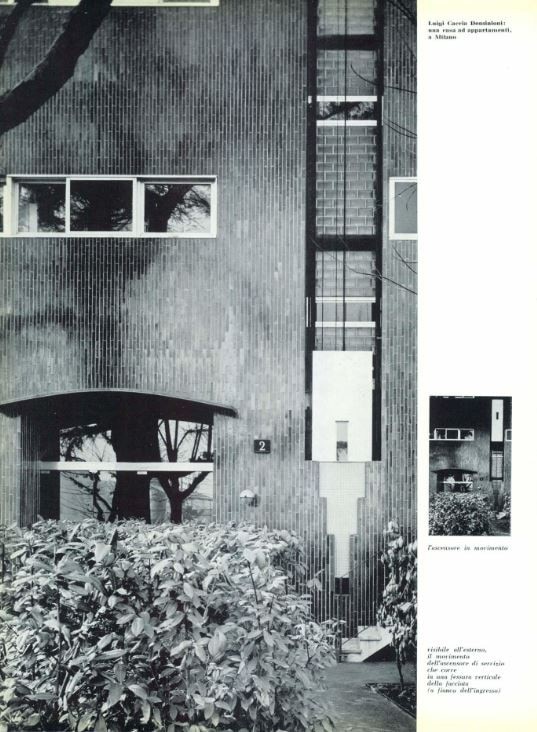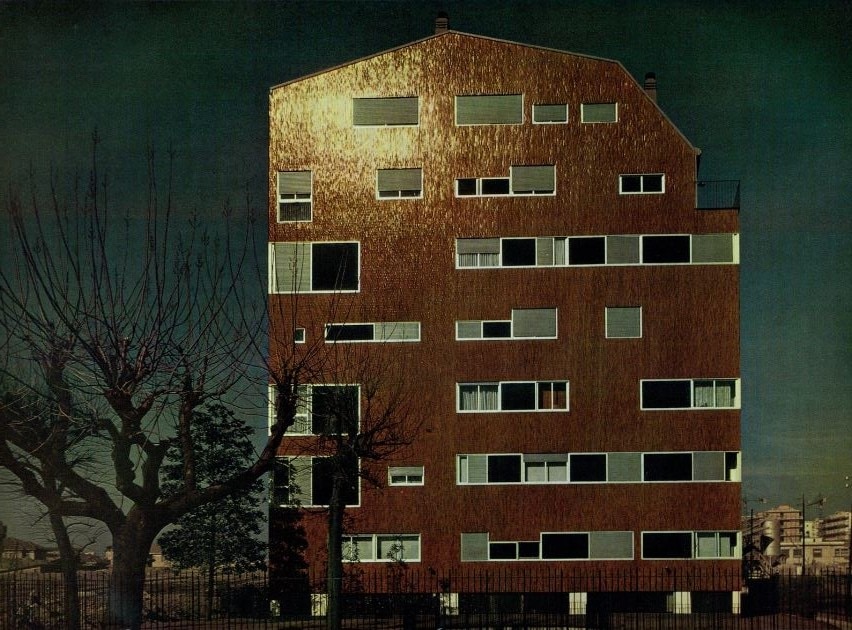Luigi Caccia Dominioni’s name is inextricably linked to the history of 20th-century architecture and design as it is to the image and cultural context of the city of Milan. Since his studies in architecture and his first collaborations in the 1930s with other crucial figures destined to become fundamental in the postwar period, he developed an extremely sophisticated and personal combination of modern language and elaborations on decoration, plasticity, and historical elements that would become recognizable almost as a “Caccia style”, expressed in objects as well as in buildings. We find it in the Phonola radio of 1937 as in the Catilina chair of 1958, or in urban-scale Milanese complexes such as Corso Italia and this “house” placed at the center of a large area still in definition by the end of the 1950s, a symbol of Milan growing up once again, rewriting its visual character. Domus published the Piazza Carbonari house in June 1963, on issue 403.

In Milan, in an area being transformed
The photographs on these pages illustrate the architectural aspects of this recent construction by Caccia, and also its isolated presence within the landscape, the incomplete landscape of an urban area that is still vague. An area close to Milan’s “business center” but still awaiting urban development. And this still displaced architecture, however, is an example of how, with what qualities, on what level, this area can be made into a modern residential neighborhood.

The building is a shiny, shining volume with a flat, bright, continuous surface generated by the ceramic cladding (in litho-ceramic tiles by Piccinelli); the window and door frames are drawn flush with the façade, and their design runs along the fronts, “turning up” at the corners – a graphic setting, refusing all references to the structure; and the different sizes and shapes of the openings are unified by each element being brought flush with the façade so that the result is a compact single block (from which, at the top of the west facade, the large two-story high bow window protrudes).
In these aspects of the façade the building takes up a solution peculiar to Caccia, which he had already adopted in another apartment house in Milan, on Via Nievo, built in '57. Another solution typical of Caccia is the service elevator, which runs in a vertical carving, flush with the facade; the movement of the cabin is visible from the outside, and the shaped profile of the carving is a “divertissement”.

The house is surrounded by the garden, an extensive garden that covers three times the area of the building, and in the garden the fully underground garages are excavated, accessible by descending a winding ramp.


